SAN FRANCISCO (CN) — Firecrackers and shouts signaled the beginning of San Francisco’s annual Chinese New Year Parade on Saturday, the biggest celebration of its kind outside of Asia. Around 200,000 people crowded the city streets on bleachers and against barricades to catch a glimpse of street performances from more than 100 unique parade groups over the two-and-a-half-hour parade.
“I didn’t expect that so many people turned up,” Joan Chen, the parade’s celebrity grand marshal of “Twin Peaks” fame, told ABC 7 News. “I think it’s a new beginning for our city, with our new mayor and civic leaders. I feel that the Year of the Snake is going to be a great year.”
Joan Chen, the Chinese-American actress and film director famous for her roles in The Last Emperor and Twin Peaks, was the grand marshal of the 2025 San Francisco Chinese New Year Parade. (Matt Simons/Courthouse News)
The parade is the climactic event of nearly two weeks of Lunar New Year celebrations in the city, including street fairs, coronation balls and Miss Chinatown pageants.
Despite competing with the NBA’s All-Star weekend across the water in Oakland, the Bay Area tradition still drew an estimated 3 million viewers counting in-person and via broadcast. Attendees came from across the region to witness the event, which saw people staking out spots on the street for hours before it began.
“I just want to see the culture, absorb more of it, and learn from it,” Michael Nonan, who traveled from Sacramento to see the parade, told Courthouse News. “Besides that, it all just looks really cool.”
The elaborate festivities kicked off around 5 p.m. at Market and Second Street with a motorcade of the city’s elected officials.
 Children in lion dance costumes walk down Market St. at San Francisco’s 2025 Chinese New Year Parade. (Matt Simons/Courthouse News)
Children in lion dance costumes walk down Market St. at San Francisco’s 2025 Chinese New Year Parade. (Matt Simons/Courthouse News)
2025 is the Year of the Snake, a period that could symbolize transformation for a city that claims to be turning over a new leaf. The parade route was swelling with local politicians, including newly elected Mayor Daniel Lurie, who won November’s election on a platform of “cleaning up San Francisco.” The mayor, a moderate Democrat, has promised a tough-on-crime approach to drugs and homelessness that endeared him to Chinatown’s business owners and has already secured an emergency ordinance to address the city’s fentanyl crisis.
“When we’re at our best, we’re the greatest city in the world,” Lurie told ABC 7 News, which broadcasts the parade each year. “And we’ve had our challenges, but we’re gonna hit them face on.”
Early in the parade, the mayor abandoned his car and ran out to the barricades to shake hands with audience members and speak with children in a crowd-winning political move.
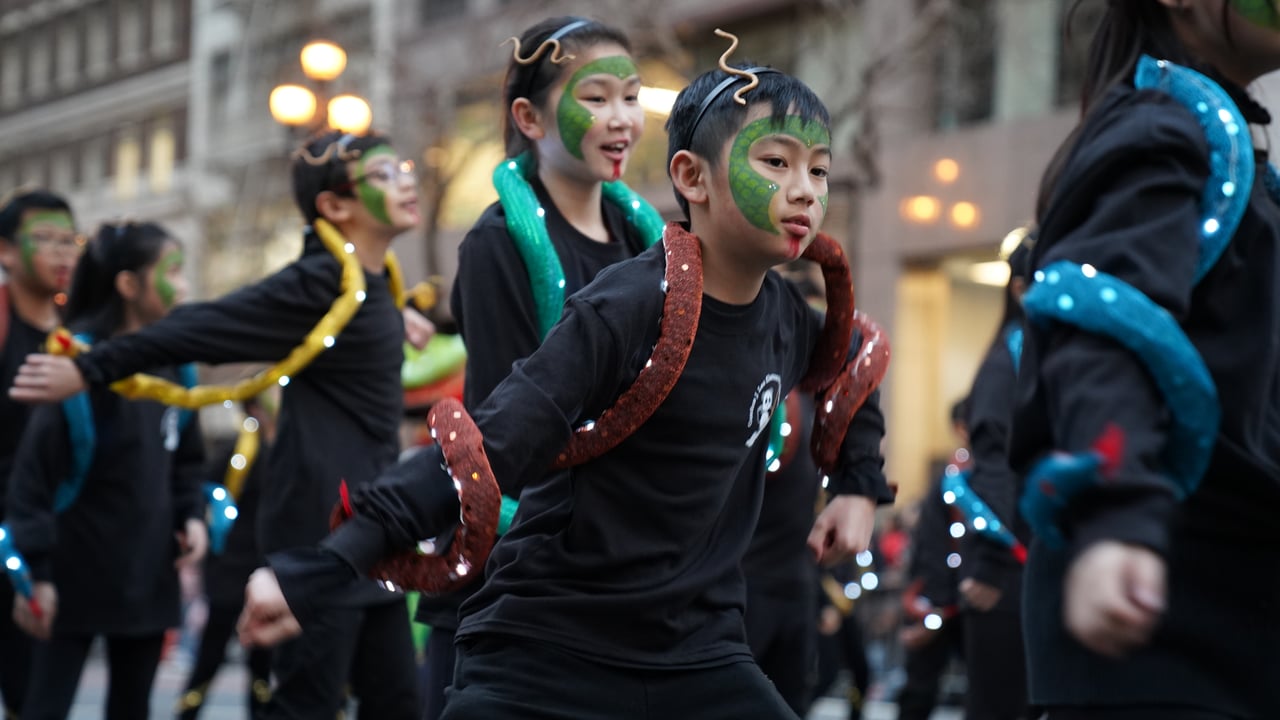 Performers breakdance to a fusion of traditional and hip-hop music at the 2025 Chinese New Year Parade in San Francisco. (Matt Simons/Courthouse News)
Performers breakdance to a fusion of traditional and hip-hop music at the 2025 Chinese New Year Parade in San Francisco. (Matt Simons/Courthouse News)
The parade route was full of excitement generated by firecrackers, dragons with twisting bodies, martial arts demonstrations, stilt-walkers, traditional musicians, dance groups, snake-themed floats and other attractions that continued long after dark. Lion dancers, often teenagers and children in pairs, routinely bounded up to the barricades to rile up the crowds and let themselves be pet by audiences.
The event suffered a 25-minute delay near the beginning after a float ran out of gas — an unusual occurrence for an event whose organizers often plan each act down to the second.
The parade itself is uniquely Chinese American. Traditional Chinese dance routines are often performed back-to-back with Americana like university marching bands. Even more interesting are the performances that blend these influences into something that could only be made in the States — like a youth orchestra performing “La Cucaracha” on traditional string instruments and xylophones.
San Francisco’s Chinese New Year celebrations date back to private celebrations in the mid-1800s, but in 1953, the San Francisco Chinese Chamber of Commerce began the modern parade as a way of fighting racial discrimination. If it could demystify Chinese culture for the public, it thought, relations between communities would improve.
Since 2018, the festival boasts more than 300 volunteers and a $1 million budget.
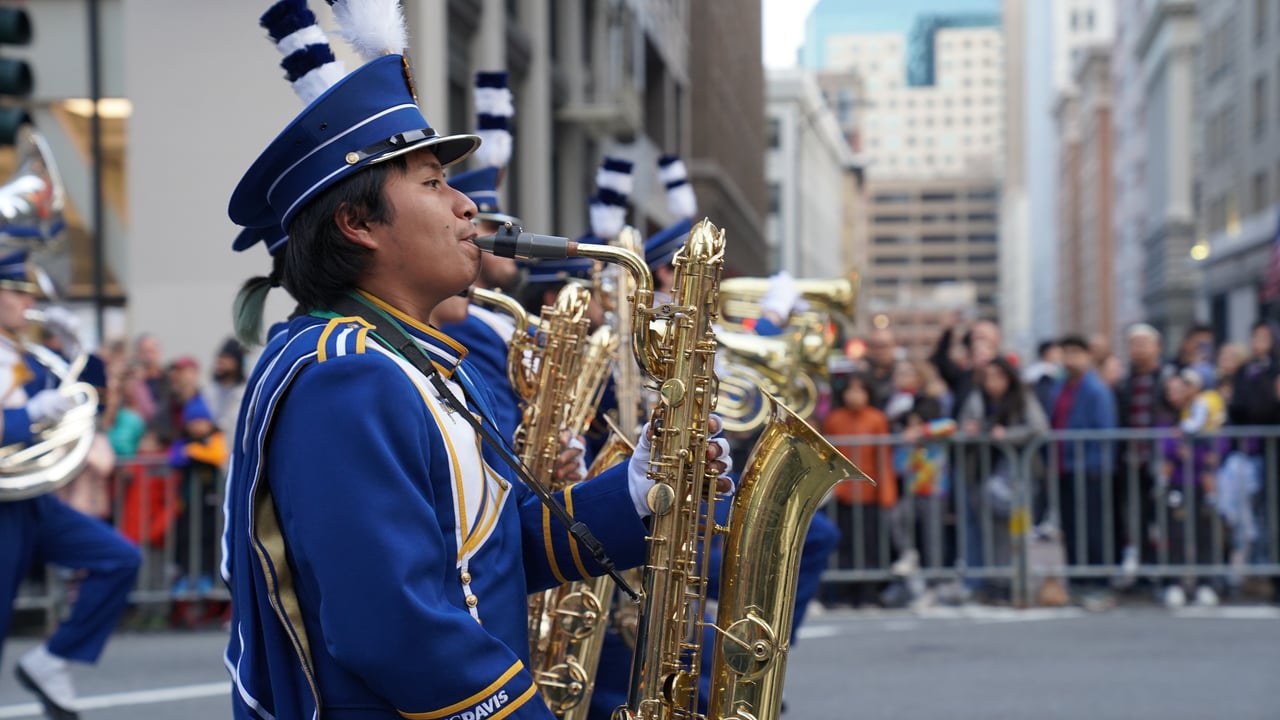 The University of California, Davis Band performs at the 2025 San Francisco Chinese New Year Parade. (Matt Simons/Courthouse News)
The University of California, Davis Band performs at the 2025 San Francisco Chinese New Year Parade. (Matt Simons/Courthouse News)
The festival is loud in just about every way possible. Each year, audiences shout their lungs dry at the event’s performances, which include live bands, 100-decibel Bluetooth speakers and dancers. Even afterward, enthusiastic festivalgoers will pack the restaurants of Chinatown, as is tradition, bringing their unique brand of din to the tables of the historic neighborhood.
It’s a boisterous, raucous and refreshing sight to see in a world of sanitized Macy’s Thanksgiving Day parades.
The parade is not without its detractors though. As early as 1977, members of the Chinese community criticized the event for portraying a “chop suey” image of their culture that is “stereotypic and fossilized.” At certain points, audiences may agree, like when a man in a red headdress and pasted-on waist-length beard walks along the barricades signaling for applause.
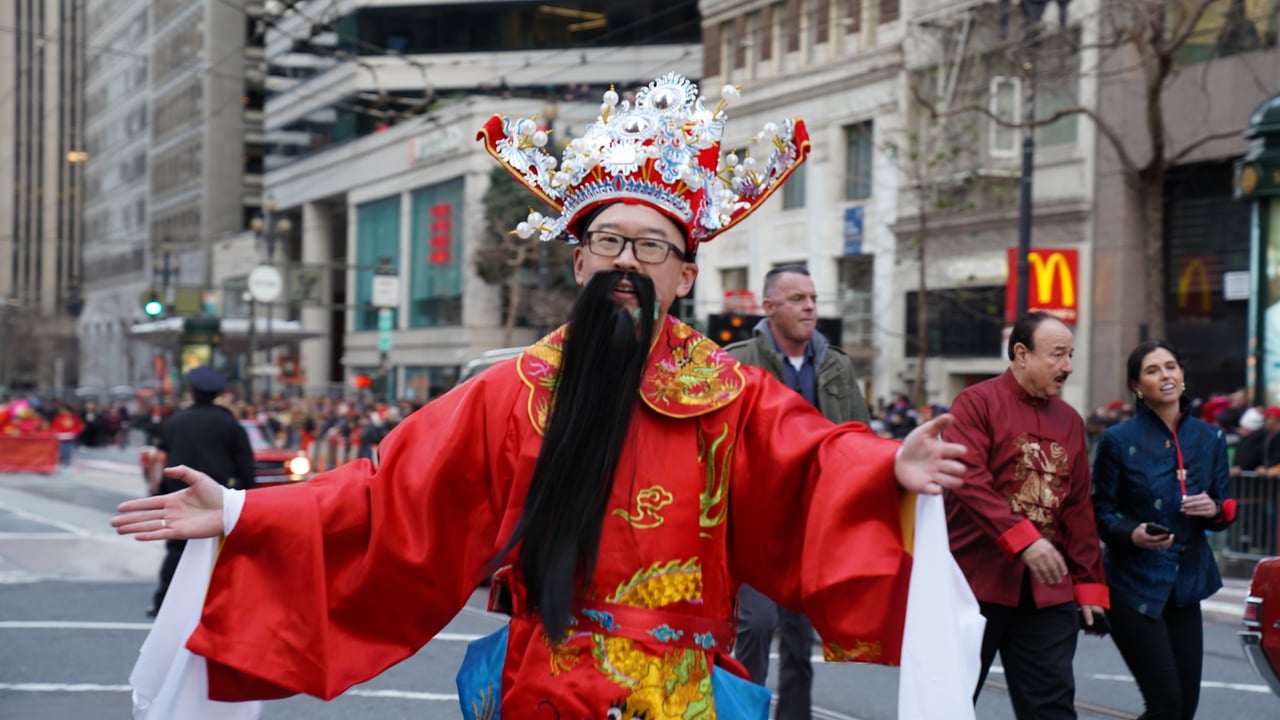 A man in a traditional costume wears a fake beard at the 2025 San Francisco Chinese New Year Parade. (Matt Simons/Courthouse News)
A man in a traditional costume wears a fake beard at the 2025 San Francisco Chinese New Year Parade. (Matt Simons/Courthouse News)
The “Golden Dragon” is the climax of the event, and some would say the highlight of the entire two weeks of celebration. It is an illuminated, 200-foot-long serpent adorned in multi-colored lights that requires 100 people to carry. Festival staff ahead of the dragon throw firecrackers sometimes only inches from the performers’ feet, giving the illusion the creature is emerging from smoke and flame.
To onlookers further down the parade route, the impression is stunning. All they hear is the guttural roar of the firecrackers echoing down the avenues and the light of the serpent’s “fire breathing” glowing from around the corner.
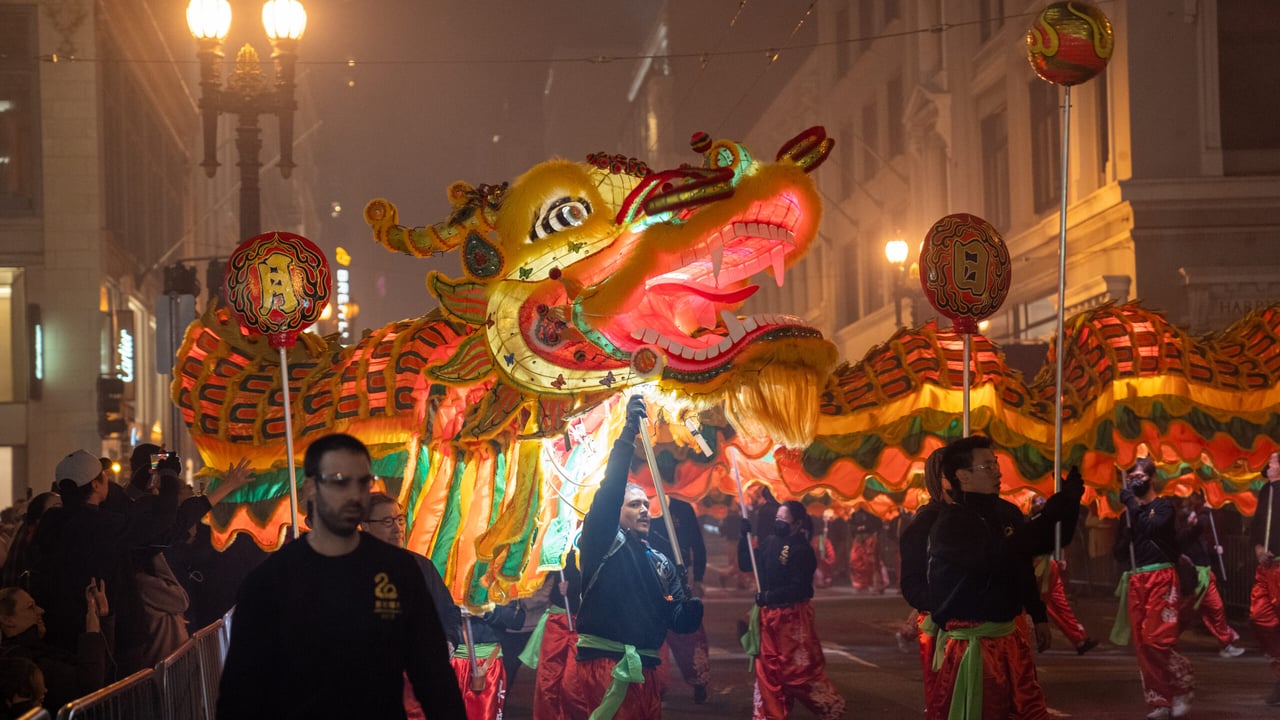 The Golden Dragon, which takes 100 people to cary, was the final parade entry of the night. (Matt Simons/Courthouse News)
The Golden Dragon, which takes 100 people to cary, was the final parade entry of the night. (Matt Simons/Courthouse News)
Within minutes of the final attraction, the crowd disperses. But even those who don’t attend will feel the effects of the parade. Many stores and restaurants in Chinatown rely on the parade and the weekend’s two-day street fair to bring in extra business.
Albert Shang, owner of Chinatown Kite Shop for more than 50 years, said he’s grateful for the extra customers during an exceptionally slow year for his store — slower even than during Covid. But the parade only comes once.
“What do I do for the rest of the year?” the 93-year-old told Courthouse News.
He attributes the hard year to crime rates in the area, which he says make customers feel unsafe, although he was hopeful Lurie’s new policies will change things for Chinatown businesses.
“We need the promotion. We need to let everyone know the city is open for business,” he said.
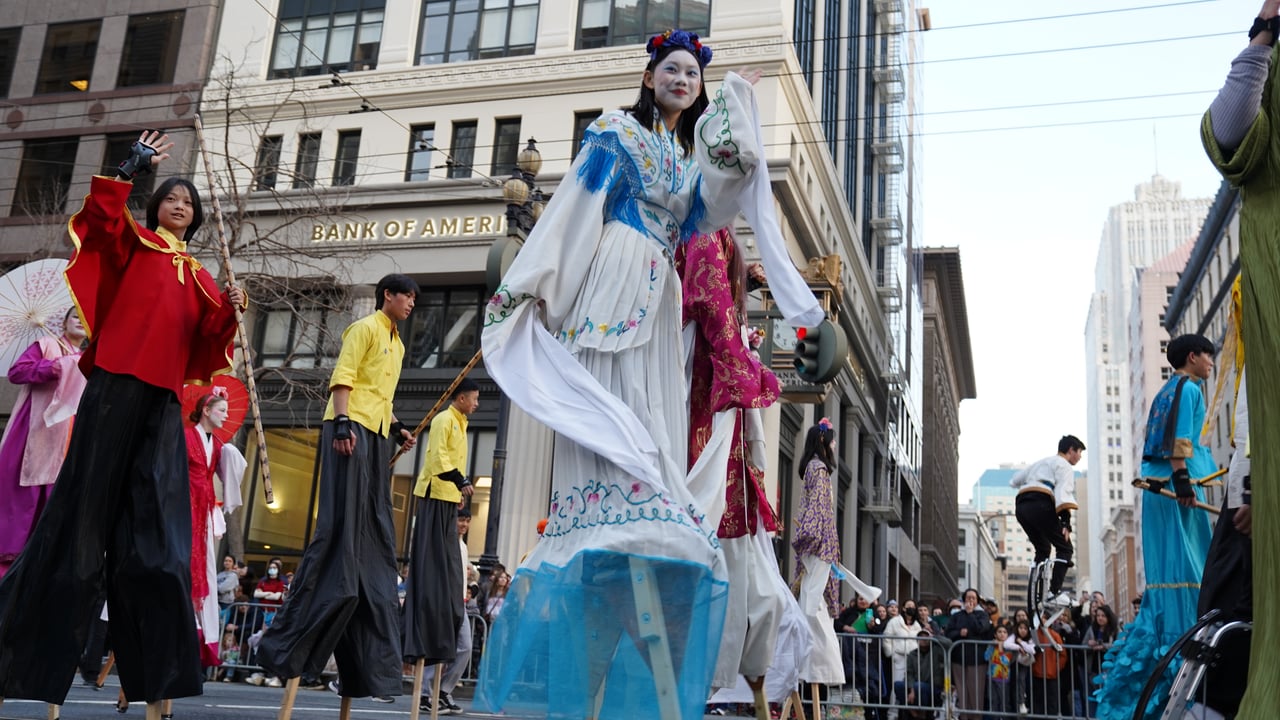 A woman on stilts waves to the crowd at the 2025 San Francisco Chinese New Year Parade. (Matt Simons/Courthouse News)
A woman on stilts waves to the crowd at the 2025 San Francisco Chinese New Year Parade. (Matt Simons/Courthouse News)
The Year of the Snake is known as the Year of the “Little Dragon” to some, an image that symbolizes transformation and new beginnings. The people of Chinatown are betting a lot on the new mayor to change things. Banners hung above the streets Saturday that read, “Chinatown Welcomes Mayor Lurie.”
Whether their hopes are misplaced remains to be seen. But for the people who live in and around Chinatown, they’re counting on it to be true.
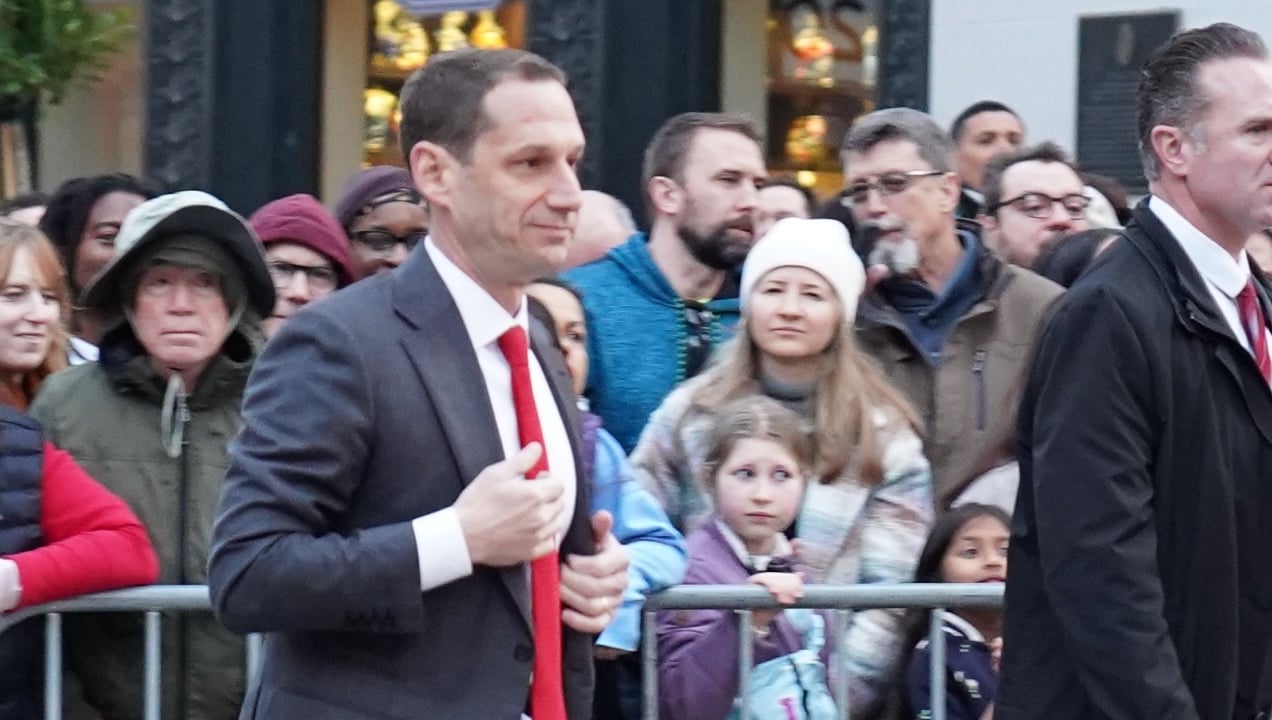 San Francisco Mayor Daniel Lurie catches up to his parade car after shaking hands with constituents at the event barricades. (Matt Simons/Courthouse News)
San Francisco Mayor Daniel Lurie catches up to his parade car after shaking hands with constituents at the event barricades. (Matt Simons/Courthouse News)
Subscribe to Closing Arguments
Sign up for new weekly newsletter Closing Arguments to get the latest about ongoing trials, major litigation and hot cases and rulings in courthouses around the U.S. and the world.
Copyright for syndicated content belongs to the linked Source link












